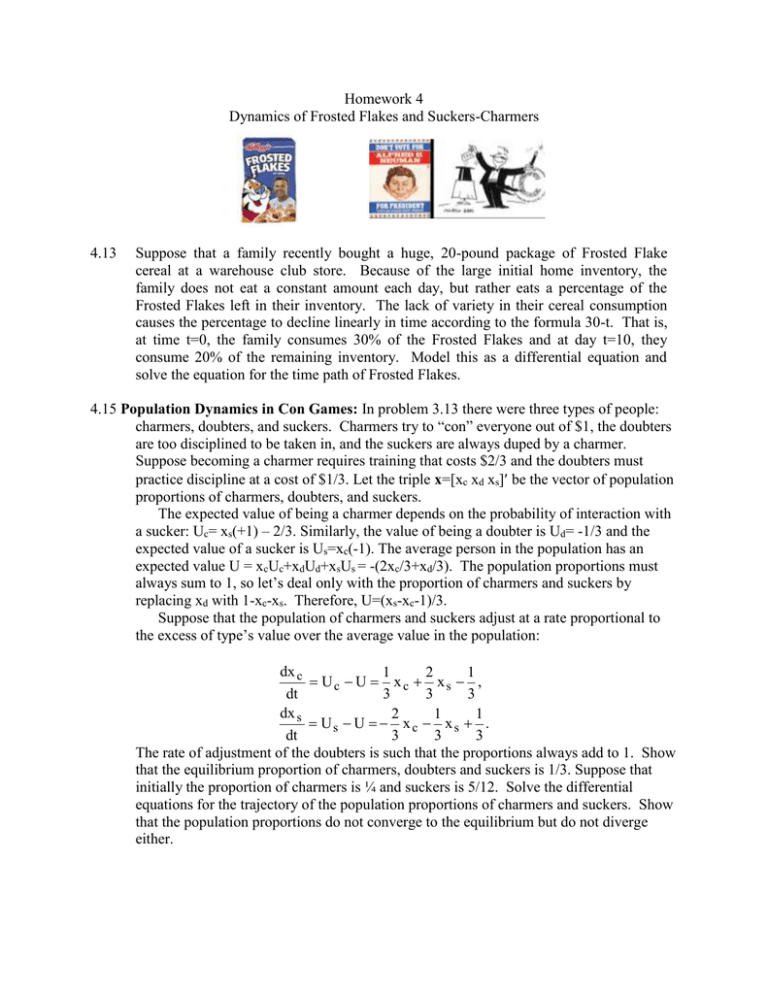Homework 4 Dynamics of Frosted Flakes and Suckers-Charmers 4.13
advertisement

Homework 4 Dynamics of Frosted Flakes and Suckers-Charmers 4.13 Suppose that a family recently bought a huge, 20-pound package of Frosted Flake cereal at a warehouse club store. Because of the large initial home inventory, the family does not eat a constant amount each day, but rather eats a percentage of the Frosted Flakes left in their inventory. The lack of variety in their cereal consumption causes the percentage to decline linearly in time according to the formula 30-t. That is, at time t=0, the family consumes 30% of the Frosted Flakes and at day t=10, they consume 20% of the remaining inventory. Model this as a differential equation and solve the equation for the time path of Frosted Flakes. 4.15 Population Dynamics in Con Games: In problem 3.13 there were three types of people: charmers, doubters, and suckers. Charmers try to “con” everyone out of $1, the doubters are too disciplined to be taken in, and the suckers are always duped by a charmer. Suppose becoming a charmer requires training that costs $2/3 and the doubters must practice discipline at a cost of $1/3. Let the triple x=[xc xd xs] be the vector of population proportions of charmers, doubters, and suckers. The expected value of being a charmer depends on the probability of interaction with a sucker: Uc= xs(+1) – 2/3. Similarly, the value of being a doubter is Ud= -1/3 and the expected value of a sucker is Us=xc(-1). The average person in the population has an expected value U = xcUc+xdUd+xsUs = -(2xc/3+xd/3). The population proportions must always sum to 1, so let’s deal only with the proportion of charmers and suckers by replacing xd with 1-xc-xs. Therefore, U=(xs-xc-1)/3. Suppose that the population of charmers and suckers adjust at a rate proportional to the excess of type’s value over the average value in the population: dx c 1 2 1 Uc U xc xs , dt 3 3 3 dx s 2 1 1 Us U x c xs . dt 3 3 3 The rate of adjustment of the doubters is such that the proportions always add to 1. Show that the equilibrium proportion of charmers, doubters and suckers is 1/3. Suppose that initially the proportion of charmers is ¼ and suckers is 5/12. Solve the differential equations for the trajectory of the population proportions of charmers and suckers. Show that the population proportions do not converge to the equilibrium but do not diverge either.



